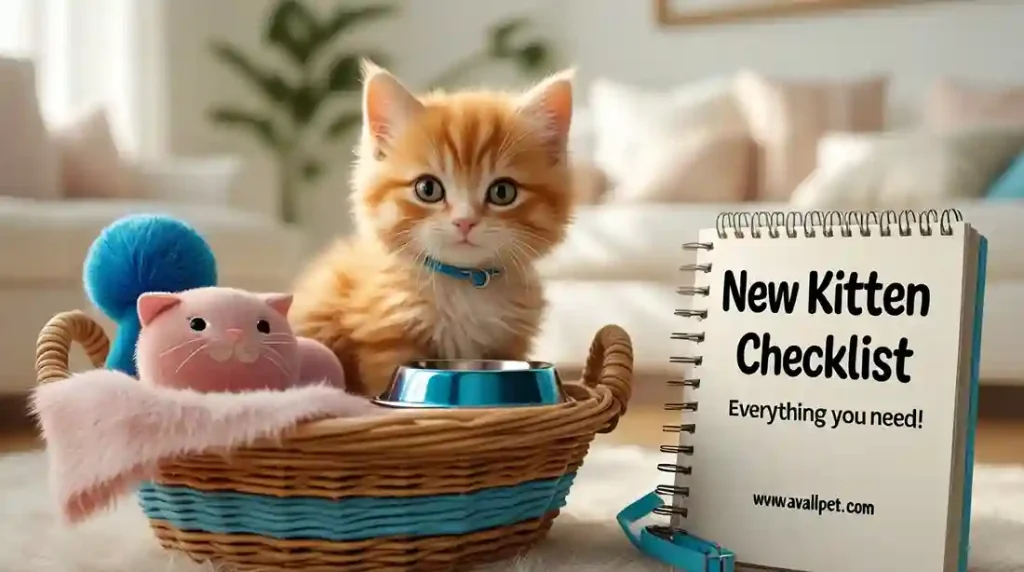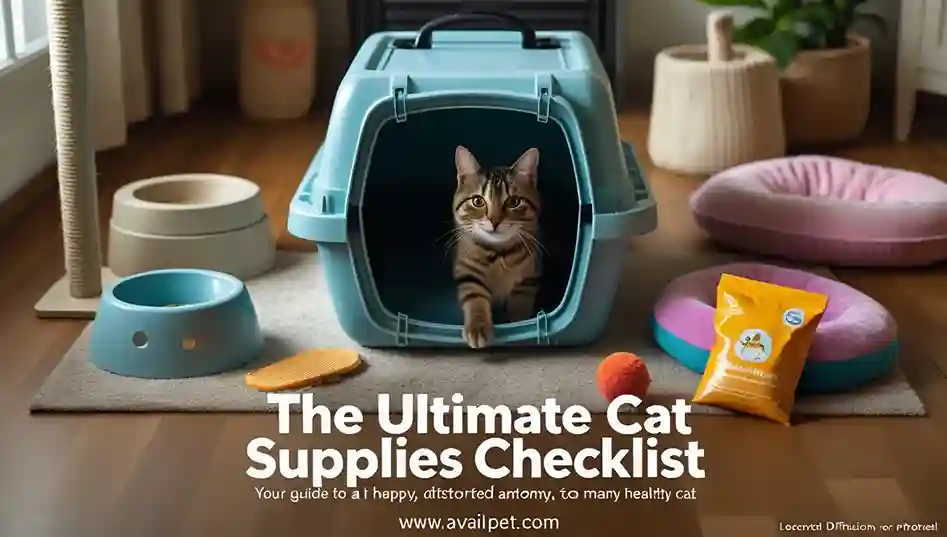Imagine a household fixture so perfectly integrated that it’s both invisible and utterly essential. This is the hallmark of a flawless cat litter box setup. Yet, many pet owners find themselves in a constant battle with odor, mess, and, most distressingly, a cat that has started avoiding the box altogether. These aren’t behavioral failures; they are almost always a direct result of a setup that ignores your cat’s fundamental instincts.
The truth is, getting it right hinges on three simple but non-negotiable decisions: the number of boxes, their location, and their type. Overlook any one of these, and you risk creating a problem where none needs to exist.
At AvailPet, we translate feline needs into practical solutions. This definitive guide to cat litter box setup will provide you with a clear, actionable blueprint to create a bathroom environment your cat will reliably use, ensuring a cleaner home and a happier pet. For a complete overview of all things litter-related, our Cat Litter Guide is your ultimate resource.
Key Takeaways: Cat Litter Box Setup
Before diving into the details, here are the most critical, actionable insights from our comprehensive guide:
- 📏 The Golden Rule: Always provide one more litter box than the number of cats you have. This prevents territorial issues and ensures a backup option.
- 📍 Perfect Placement: Choose a quiet, low-traffic, and easily accessible location on every level of your home your cat uses. Avoid areas near loud appliances or food bowls.
- 📦 Box Specifications: Large, uncovered boxes are generally preferred by cats and should be at least 1.5 times your cat’s length for comfortable use.
- 🚫 Location Dangers: Never place boxes in areas with hazardous chemicals, excessive noise, or poor ventilation, as this can deter use and pose safety risks.
- 🛡️ Setup Foundation: Use a 2-3 inch depth of litter and place a waterproof, non-slip mat underneath to manage tracking and simplify cleanup.
Quick-Start Setup Checklist
Use this actionable checklist to ensure your litter box setup is perfect from the start. No guesswork required.
- Number Calculated: ____ boxes total (Using the N+1 Rule: Number of Cats: ___ + 1)
- Locations Mapped: Quiet, private, and easily accessible 24/7. At least one box on every floor your cat uses.
- Box Type Selected: Uncovered, large enough for comfortable turning (minimum 1.5x your cat’s length).
- Safety Checked: All boxes are away from food/water bowls, loud appliances, and hazardous areas.
- Supplies Ready: 2-3 inches of quality litter, a sturdy scoop, and a waterproof litter-trapping mat placed underneath.
The 3 Golden Rules of Perfect Litter Box Setup
Master these three fundamental principles, and you will solve the vast majority of litter box problems before they even begin.
Rule #1: The Mathematics of Multiple Cats (The N+1 Formula)
This is the most violated—and most important—rule in multi-cat households. The formula is simple: Number of Cats + 1 = Minimum Number of Litter Boxes.
- Why It Works: This prevents resource guarding, reduces competition and stress, and provides a crucial backup option if one box is too dirty or is being “guarded” by another cat.
- Real-World Scenarios:
- 1 Cat = 2 Boxes (a primary box and a convenient backup)
- 2 Cats = 3 Boxes (eliminates territory disputes and congestion)
- 3 Cats = 4 Boxes (ensures constant availability and a peaceful coexistence)
- Pro Tip: Space boxes throughout your home in different locations rather than clustering them together. This gives each cat options and a sense of security.
Rule #2: Location Science – Where Cats Actually Want to Go
A litter box in the wrong place is a litter box that gets avoided. The perfect spot balances privacy with accessibility.
- The Perfect Spot Formula: Quiet + Private + Easily Accessible = Success.
- Absolute No-Zone Locations:
- Next to loud appliances like washing machines, dryers, or furnaces. The sudden noise and vibrations are terrifying.
- Beside food and water bowls. Cats are hardwired to avoid contaminating their eating area.
- Damp, dark basements or humid bathrooms that feel isolating and can promote mold.
- High-traffic hallways or areas where the cat could be cornered.
- Small Space Solutions:
- Closet Conversion: Install a pet door in a closet door for ultimate privacy.
- Furniture Disguise: Use an end table or cabinet with a discreet entry cutout.
- Room Divider: A decorative screen can create a private nook in a studio apartment.
Rule #3: Box & Litter Selection – What Makes Cats Comfortable
If the box itself is intimidating or uncomfortable, nothing else matters.
- The Ideal Box Specifications:
- Size: At least 1.5 times your cat’s length (from nose to the base of the tail) to allow for comfortable turning and digging.
- Depth: Sides that are 3 inches or higher to contain litter, but not so high they are difficult to enter.
- Box Type Breakdown:
- Open Trays: The #1 cat preference. They offer easy entry/exit, full visibility, and don’t trap odors. The trade-off is more litter tracking and less odor containment for you.
- Covered/Hooded Boxes: Contain litter and odors better, but can feel threatening (no escape route) and trap smells inside, which is unpleasant for the cat.
- Top-Entry Boxes: Excellent for containing litter scatter, but can be difficult for kittens, seniors, or cats with mobility issues.
- The Litter Foundation:
- Depth: Maintain 2-3 inches of litter for proper absorption and digging.
- Type: Most cats prefer a fine, sand-like clumping litter. When in doubt, start simple and unscented.
- For specific product recommendations that support a successful setup, see our guide to the Best Clumping Cat Litter.
Advanced Setup Solutions & Troubleshooting
Even with the golden rules, unique challenges can arise. Here are targeted solutions for specific scenarios and common problems.
Special Needs Setups
- For Senior Cats & Kittens:
- Use low-entry boxes (3-inch sides or less) for easy access.
- Place non-slip mats inside and outside the box to prevent slipping.
- Ensure locations are easily accessible, avoiding stairs or high-traffic areas.
- Explore our dedicated guide for Cat Litter for Senior Cats for more on comfort and safety.
- For Anxious or Shy Cats:
- Provide multiple escape routes from the litter box area.
- Choose extremely private, hidden locations.
- Consider using a Feliway diffuser nearby to create a calming environment.
- For Persistent Kickers & High Scatter:
- High-walled boxes (9+ inches) or top-entry models are your best solution.
- Always use a high-sided litter trapping mat around the box.
- Ensure the litter depth is adequate (3+ inches) to satisfy digging instincts.
- For Cats with Mobility Issues:
- Provide extra-large boxes for easy turning and maneuvering.
- Consider adding a low ramp for high-sided or top-entry boxes.
- Avoid confined spaces that make entry and exit difficult.
Common Setup Failures & Instant Fixes
- Problem: “My cat avoids the box entirely.”
- Likely Cause: Wrong location or box type.
- Fix: Immediately provide an additional, uncovered box in a new, quiet location. This is your diagnostic tool.
- Problem: “Litter gets tracked everywhere.”
- Likely Cause: Wrong box type or missing mat.
- Fix: Switch to a top-entry box and place a high-quality litter-trapping mat extending 2-3 feet around the box.
- Problem: “The box smells immediately.”
- Likely Cause: Insufficient number of boxes or poor maintenance.
- Fix: Add more boxes (review the N+1 rule) and ensure you are scooping at least twice daily. For a detailed cleaning schedule, see our guide on How Often to Change Cat Litter.
- Problem: “One cat blocks access for the others.”
- Likely Cause: Not enough separated boxes.
- Fix: Spread boxes throughout your home in different rooms to prevent guarding and provide escape routes for subordinate cats.
FAQs: Cat Litter Box Setup
Where should I put a litter box in a 500 sq ft apartment?
In a small space, prioritize privacy and separation from living areas. The best spots are often in a bathroom corner, a closet with the door propped open, or disguised within furniture like a side table or bench. The key is ensuring it’s not next to your cat’s food or a noisy appliance.
Is it okay to put two litter boxes next to each other?
No. Placing two boxes side-by-side defeats the purpose of the N+1 rule. A cat may view them as a single territory, and a dominant cat can still guard both. For the rule to be effective, boxes should be placed in separate, distinct locations to provide true options and reduce competition.
Can I put a litter box in my bedroom?
Yes, if it’s the best available option, but be mindful. Place it in a quiet corner, as far from the bed as possible. Ensure you are meticulous about scooping daily to control odor. This can be a good solution for a single cat in a studio apartment or for bonding with a new kitten, but it may not be ideal long-term.
What’s the best litter box for a 20-pound cat?
A large, high-sided, uncovered storage tote is often the best DIY solution. It provides ample length and width for turning and high walls to contain litter. For a commercial product, look for extra-large plastic trays specifically labeled for large cats, ensuring it is at least 1.5 times your cat’s length.
Why does my cat refuse to use a covered litter box?
Covered boxes can feel confining and trap odors inside, creating an overwhelming experience for a cat’s sensitive nose. They also have only one exit, which can make a cat feel vulnerable to being ambushed. If your cat avoids a covered box, simply remove the hood. An open box is almost always preferred.
Pro Maintenance Integration
A perfect setup is only effective with consistent upkeep. Integrate these maintenance tasks into your routine to ensure a perpetually clean and inviting environment for your cat.
- Daily (Non-Negotiable): Scoop all boxes 1-2 times to remove solid waste and urine clumps. This is the single most important habit for odor control and cat satisfaction.
- Weekly: Top up litter levels to maintain the ideal 2-3 inch depth. Check and clean the litter-trapping mat as needed.
- Monthly (or as needed): Perform a full litter change and deep clean of each box. Empty all litter, wash the box with mild soap and water, dry thoroughly, and refill with fresh litter.
- For a detailed, vet-reviewed breakdown of schedules for different litter types and multi-cat homes, our guide How Often to Change Cat Litter has you covered.
Conclusion: Your Blueprint for Litter Box Success
Perfecting your cat’s litter box setup isn’t about finding one single magic solution—it’s about understanding their natural instincts and creating multiple welcoming, safe, and clean bathroom stations throughout your home. By faithfully following the N+1 rule for the number of boxes, choosing quiet and accessible locations, and prioritizing your cat’s comfort with the right box type and size, you build a foundation for lifelong litter box success.
Remember, your reward for this thoughtful setup is a home that stays fresher and a cat who feels secure and content, using their box reliably every time. For ongoing care, from choosing the best litter to mastering a cleaning schedule, your journey continues with our comprehensive Cat Litter Guide.
Sources
- Cornell Feline Health Center – Litter Box Problems
- International Cat Care – Litter & Litter Boxes
- ASPCA – Litter Box Care
Disclaimer: Our setup recommendations are based on feline behavior research and veterinary guidance. Individual cat preferences may vary. We are not veterinarians. For persistent litter box issues or health concerns, please consult your veterinarian. We may earn from qualifying purchases through our affiliate links.






